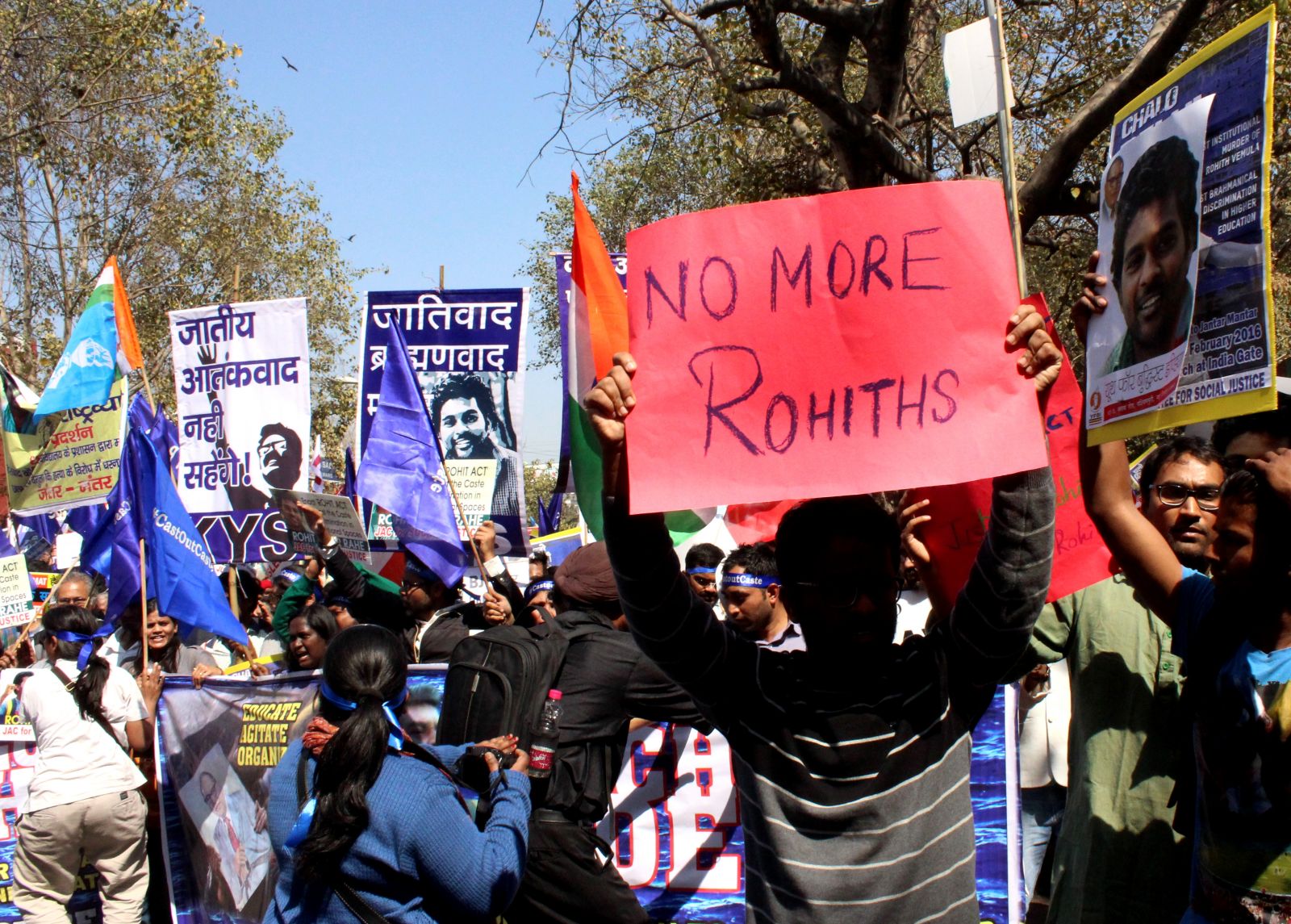First published on February 23, 2016
Rohith Vemula gives them the perfect point of departure
Delhi is a city that has naturalised caste: a gardener believes he is born to be a gardener; a maid believes she was born to be a maid. Its so called efficiency has something to do with this aspect. Even among academics and students, the understanding and discussions of caste stay at their abstract best. Most of them are well meaning to be concerned about the “upliftment of Dalits” but in the busy-ness of their own professional lives, they really couldn’t do much. The city kept running on the shoulders of the Dalits. Caste was a matter to be encountered only in reservation debates and that was a sort polemics only the political class could go through with.
But Rohith Vemula’s one-note altered the caste debates in the country, from asking, “How can discrimination against Dalits be stopped?” or, “How can Dalits be uplifted” to, “Why is our society so inhumanly casteist?” or, “When will upper castes improve?”, making every one ask the question, “Why are we like this?”. The fact that his suicide note did not have a single word about caste discrimination, it only spoke about the need to travel from “shadows to stars” and the impossibility of it, struck a code with Delhi’s students. Now they knew it was not about Dalits alone; it was more about them. Or the impossibility of being themselves ethically in this system. Now the onus was on the academic community: to make sure that Rohith is the absolute last to be orphaned to death.
The huge march in solidarity with JNU (against the trending #ShutdownJNU) on February 18 had many posters of Rohith Vemula and slogans such as, “JNU to bahana hai, Rohith ka mudda dabana hai” (JNU is an excuse to distract from Rohith’s issue) prominently demonstrated such a change. The straight-line from FTII through HCU and OccupyUGC to JNU that students kept drawing was quite in place: the central government doesn’t seem to understand the ways in which students work or think.
The Narendra Modi government might be good at attacking known political or social formations but students are an evolving social category and it clearly doesn’t have the tools. If FTII was a clear case of trying to show “we can, so we will”, OccupyUGC was an unnecessary provocation and HCU was MHRD’s flexing its muscles gone terribly awry and JNU its hurried conclusions riding on hyper sensationalist jingoism. The mass media debates on national/anti-national, continued on social media, made students realise their common sense and regular discussions were stuff that could be termed “anti-national” and they found themselves in a strange situation where they had to explain their very existence to friends and family in the “tax payer entitlement” narrative. Students who were not part of any existing political formation also felt alienated and they kept telling themselves and others: students have to fight as students. In fact, they found a student issue with a cosmic objective to fight for.
The “Chalo Dilli” march on April 23rd and its clarion call “Delhi for Rohith Vemula” became exciting not just because more than 5,000 people walked a kilometre together from Ambedkar Bhawan to Jantar Mantar, or because there was a representation from all parties other than the BJP for the rally, but because the students had found a new icon in Rohith Vemula. It was difficult to dispute him or reject him if you didn’t have party obligations or social interests.
The speciality of this icon was in its social content: caste was becoming an issue of political debate in student lives. Some Delhi students whose encounter with caste as a political issue was rather new also kept shouting “Jai Bheem” in an event primarily organised by Dalit organisations.
One of the limitations of the Indian student movements has been their being floated and managed by students who socially belong to the ruling elite of the country. This is quite different from the Western situation where student movements have been political, academic and cultural manifestations of social changes. The chemical change of thinking in the 1960s was a result of socio-economic changes that ushered in women, African Americans, refugees, third world students and homosexuals into academe in huge numbers.
In India, such a turn hasn’t happened. Nationalism and universal class wars were the concerns of student politics in earlier decades. But now the organising principle of Indian society is their problem as students. It might be the caste turn for student discourses.
Surely, unlike in the University of Hyderabad, where the number of Dalit students is huge and the discourse of caste is very strong, Delhi still doesn’t have such a situation. But it must now emerge to address the huge blind spot they have now realised. And Rohith Vemula gives them the perfect point of departure.
